Come and be inspired
Safari! Part 1: Birds
Botswana
Mondo Verde Expeditions March 18 – April 2, 2024 Photos by Bob Gress / Birds in Focus

Lilac-breasted Roller, Shinde Camp, Botswana


Wattled Crane, Kanana Camp. There is no better place in the world to see Wattled Crane than the Okavango Delta in Botswana.

Common Ostrich, female (left) and male (right), Kanana Camp
Some birds like Common Ostrich (above) and Southern Ground-Hornbill (below) are large and easily noticed among large mammals. But many birds are shy, secretive and difficult to spot. On our safari we found about 35 species of mammals and 250 species of birds.
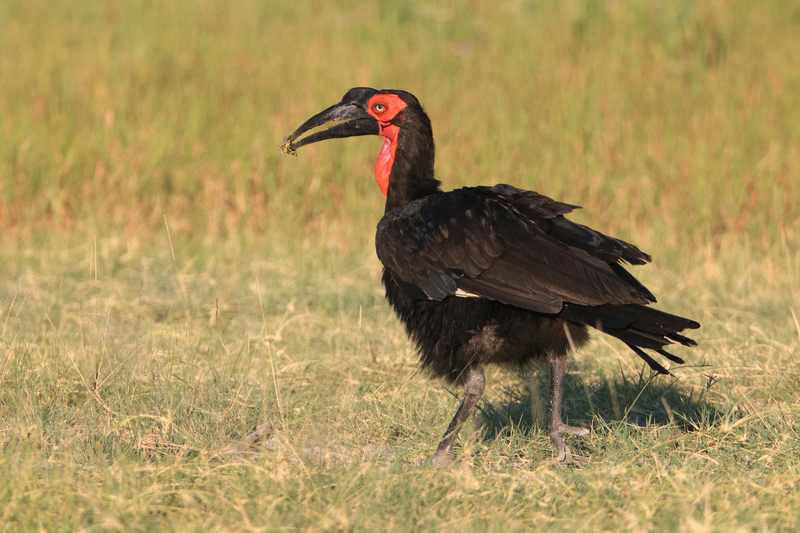
Southern Ground-Hornbill, Kanana Camp
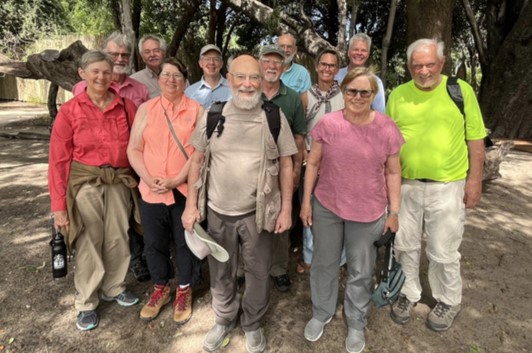
Mondo Verde Expeditions — at Shinde Camp
(left to right), Carolyn Schwab, Terry Schwab, trip leader Bob Gress, Laura Groeneweg, Kevin Groeneweg, Jim Marlett, Tom Ewert, Rod Wedel, Melinda Jett, Tom Jett, Patty Marlett, and Bill Langley


Yellow-billed Oxpecker on Plains (Burchell’s) Zebra, Shinde Camp
The oxpecker family of birds is found only in Africa. There are two species, and both feed on ectoparasites. Their flattened bills are used to scissor-off ticks. We saw them on zebras, giraffes, hippos, several antelope species and cattle. They usually occurred in small flocks of both species and sometimes six or more individuals were seen on a single host mammal.


Kori Bustard, the National Bird of Botswana, Dinaka Camp
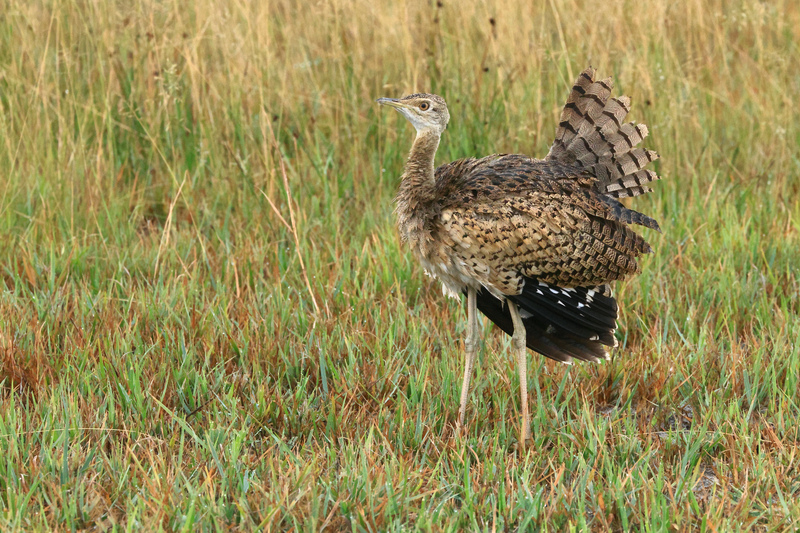
Black-bellied Bustard, Shinde Camp

Swallow-tailed Bee-eater about to swallow a Wandering Donkey Acraea. What a crazy name for a butterfly! Kanana Camp

Little Bee-eater, Shinde Camp
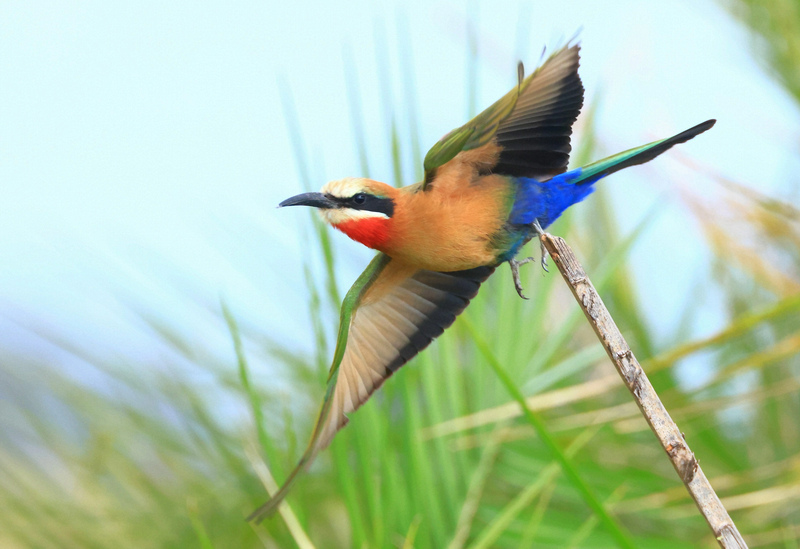
White-fronted Bee-eater, Kanana Camp
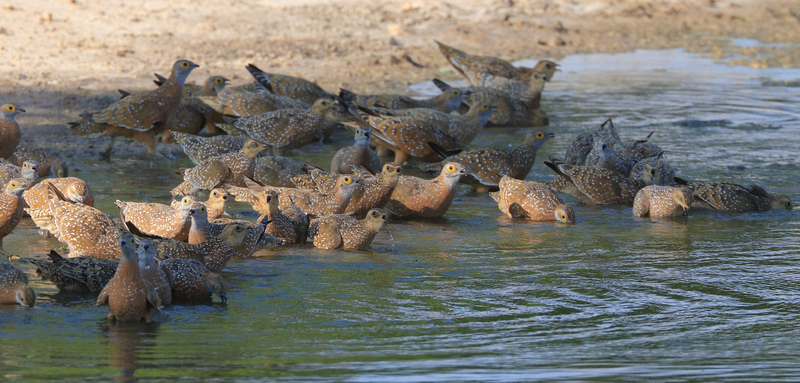
Burchell’s Sandgrouse, Dinaka Camp

Coppery-tailed Coucal, Shinde Camp
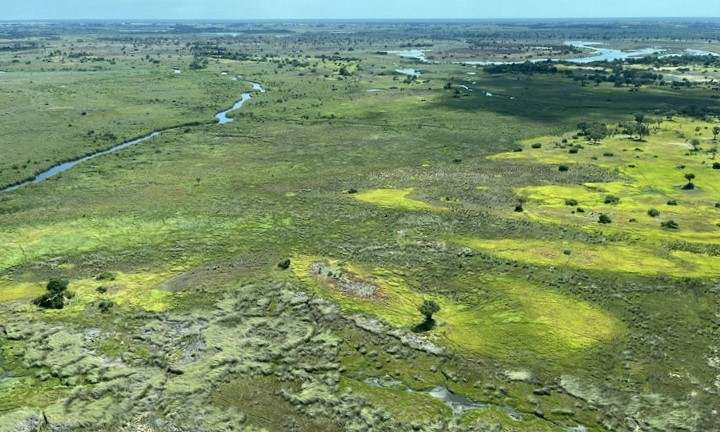
Kalahari Desert with the Okavango Delta on the horizon, Botswana
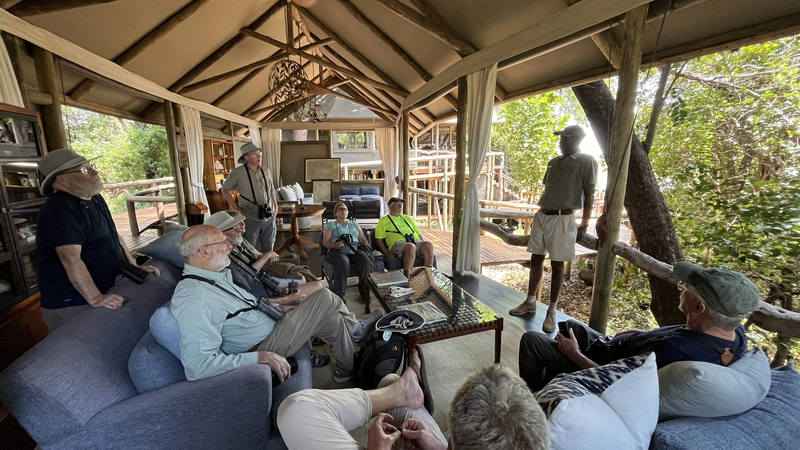
Shinde Camp, getting afternoon plans on a safari into the bush savanna.

Marico Sunbird, Shinde Camp

Collared Sunbird, Shinde Camp
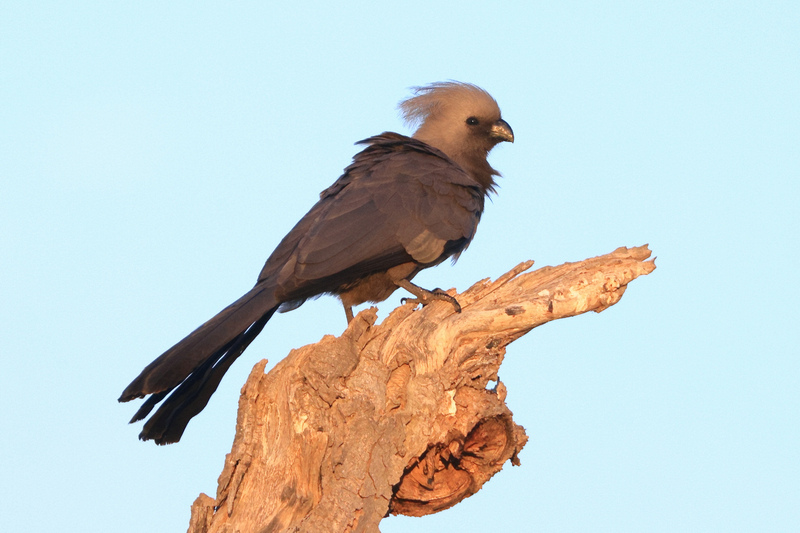
Gray Go-away-bird, Kanana Camp. The name is derived from its call, go-waaaaay. It is a large bird, rather common, and feeds in the tree canopy on shoots, flowers and fruits.

Red-faced Mousebird, Dinaka Camp. Their feathers do not grow in tracts and give the impression of fur. Like mice, they have long tails. They are strict vegetarians and eat mostly leaves along with some fruits and other plant matter.

African Harrier-Hawk, Kanana Camp

Verreaux’s Eagle-Owl, Kanana Camp

Shaft-tailed Whydah, Dinaka Camp

Black-collared Barbet excavating its nest cavity, Kanana Camp

Shinde Camp overlooks part of the Okavango Delta wetland.

African Fish-Eagle, Shinde Camp

Saddle-billed Stork, Shinde Camp

Hamerkop, Kanana Camp

African Sacred Ibis, Shinde Camp

The world-famous Okavango Delta is a World Heritage Site and home to 22 globally threatened species of birds.
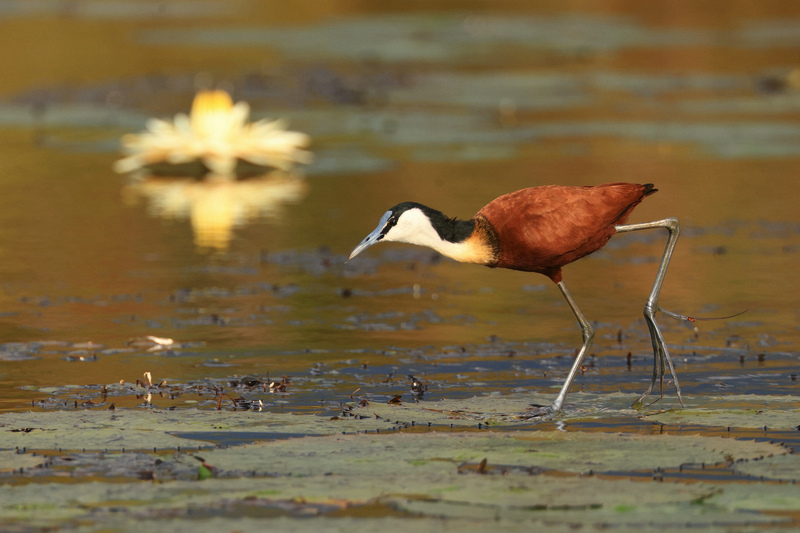
African Jacana, Shinde Camp

Black Crake, Shinde Camp

Shinde Camp, exploring the Okavango Delta

Woodland Kingfisher, Kanana Camp

Pied Kingfisher, Shinde Camp

Malachite Kingfisher, Shinde Camp
